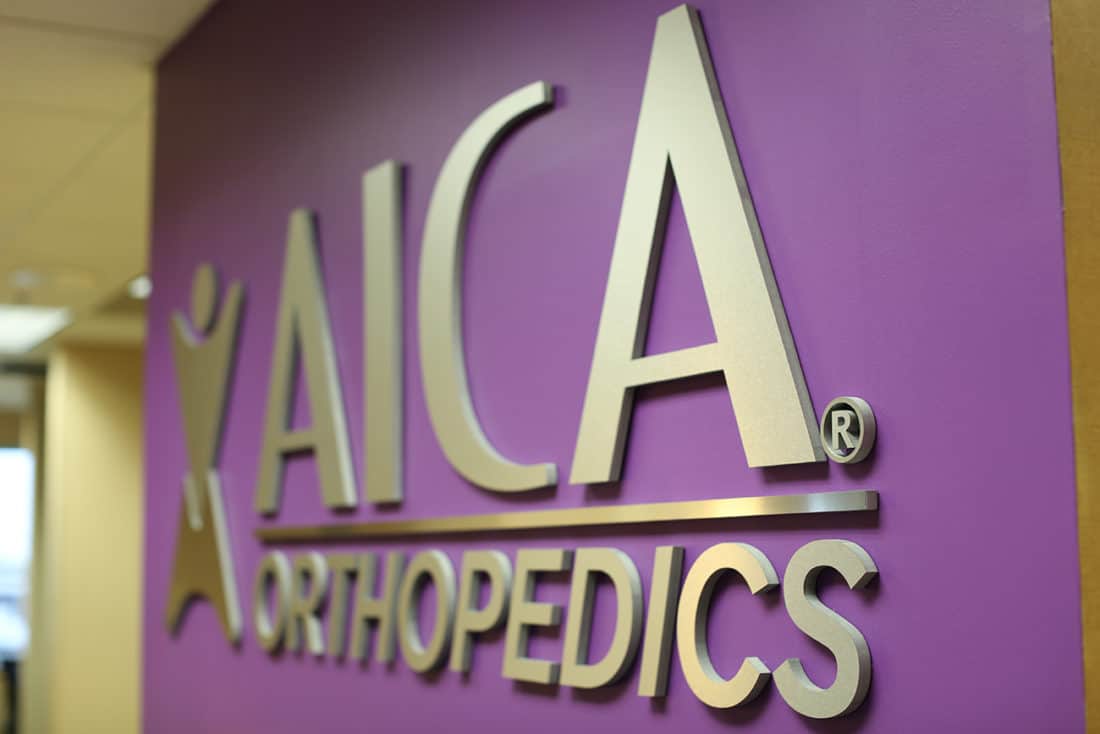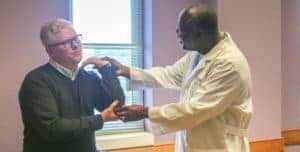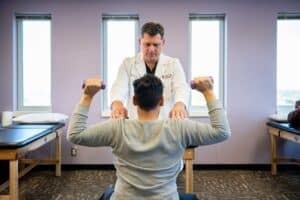Torn Meniscus Repair
The knee is one of the most commonly injured joints. We use our knees every day when we walk, run, jump, and play sports. Because the knee is used each and every day, it is often the part of the body most prone to injury. One common knee injury is a torn meniscus. Contact our friendly staff at AICA Orthopedics if you suspect that you may need to have your torn meniscus repaired.
The meniscus is a crescent-shaped piece of cartilage located between the femur and tibia bones. It forms a buffer between these two bones and protects the joint. Each knee has two menisci that help cushion the joint. A tear in the meniscus requires treatment so that you can get back to optimal health, function, and mobility. Our AICA Orthopedic doctors will provide treatment for a torn meniscus so that you can return to life as quickly as possible.
A diagnosis for torn meniscus repair begins by visiting a doctor who will perform a simple physical examination of the knee, ask related questions, and may administer imaging tests to get an accurate understanding of the state that your torn meniscus is in. From there, recommendations for treatment will be provided based on your unique situation, including meniscus surgery. Reach out to our friendly staff with questions and to schedule an appointment with a specialist.
What Causes a Torn Meniscus?

But it’s not just athletes who experience torn menisci. Simply standing up too fast from a squatting position can result in injury and a torn meniscus, or you can simply move abruptly and experience a tear, especially if your meniscus is worn down and weak already.
Adults and children alike can suffer from a meniscus tear. According to statistics, more and more adolescents playing physical sports and are likely to experience a meniscus tear. As you age, you are also more likely to experience injuries such as a torn meniscus. Over time, the meniscus weakens and degenerates.
Wear and tear from osteoarthritis can also make you more susceptible to a torn meniscus.
Symptoms of a Torn Meniscus
Symptoms of a meniscus injury may include pain, swelling, difficulty moving or bending your knee, feeling like your knee is locking, or feeling like your knee is weak or might give out when you stand up. Contact the orthopedic specialists at AICA Orthopedics in Atlanta if you notice any signs or symptoms of a torn meniscus.
Diagnosing a Torn Meniscus
If you are experiencing any of the symptoms of a torn meniscus, or if you’re not sure what kind of knee-related injury you have, visit an experienced doctor for a diagnosis and to receive personalize torn meniscus repair. Diagnosis of a knee injury begins with a physical examination of the affected area and a few questions to help isolate the potential type of injury you may have. If it’s not possible to make a diagnosis of the injury based on the physical examination, imaging tests may be recommended to get an accurate diagnosis. These tests provide detailed imaging on the inside of the knee.
X-rays
While an x-ray won’t show damage to the meniscus, it may be used to eliminate other knee-related injuries as a cause for your pain, such as fractures, dislocations, ACL & MCL injuries, and more.
LEARN MOREMRIs
MRIs utilize radio waves combined with a strong magnetic field to create highly detailed images of hard and soft tissues of the knee. This will likely be the test that is used if your doctor suspects a torn meniscus.
LEARN MOREUltrasound
With the use of sound waves, an ultrasound is capable of creating images of the cartilage that may be loose and stuck in the knee.
Treatment Options for a Torn Meniscus
If your injury is not severe, there are nonsurgical options that can treat a torn meniscus tear. Icing your injury often can help, as can using a brace to stabilize the knee and reduce pain. AICA Orthopedics physical therapists can work with you on muscle strengthening exercises to increase the range of motion and improve mobility.
For more serious tears, meniscus surgery may be required. Orthopedic surgeons can perform arthroscopic surgery for a meniscus tear, leading to a quicker and more successful and complete recovery. The most common procedure for meniscus repair is a partial meniscectomy in which the surgeon trims off part of the meniscus, leaving only the healthy parts behind. Another surgical option is a meniscus repair in which the meniscus is stitched back together.
After meniscus surgery, post-surgical physical therapy can assist with strengthening the knee and restoring it to full health. Treatment options depend on various factors, such as the type of injury and age of the individual.
Before and after treatment, you can find relief from the pain of your torn meniscus or post-surgery treatment through a few different home-treatment practices:
- Periodically ice the knee (about 30 minutes every few hours).
- Rest the knee and reduce the amount of time spent walking, using the knee, or otherwise putting weight on the knee. Crutches might be recommended depending on the severity of the injury.
- Use the knee brace (if provided) as instructed by your doctor.
- Keep the knee elevated to reduce overall swelling in the knee.
You are in good hands with AICA Orthopedics, and our specialists will do everything in their power to restore you back to full health with proper diagnosis and treatment options. Give us a call and don’t hesitate to ask us questions about your torn meniscus, pain you’re feeling, the diagnosis process, and getting treatment for your torn meniscus or knee-related injury.




